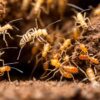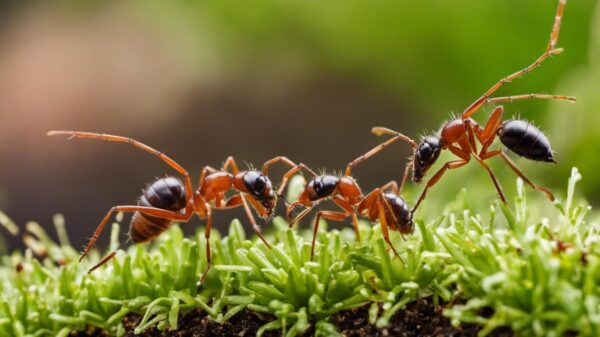The fascinating world of ant species is rich and diverse, encompassing a myriad of types each possessing unique characteristics and behaviors. One such variety is the pavement ant, a frequently seen yet often overlooked type of ant with its own suite of notable traits and distinctive behaviors. By delving into a more comprehensive understanding of these creatures, their physical features, preferred habitats, and daily activities, we can begin to recognize and appreciate the role they play in our environment. Understanding the cogs that keep the ant world spinning requires us to distinguish one ant from another—which includes competently identifying pavement ants by their piles and recognizing their behavior.
Understanding Pavement Ants
Physical Description of Pavement Ants
Pavement ants, known scientifically as Tetramorium caespitum, are comparatively small ants that typically grow to be between 1/16 and 1/8 inch in length. They come in a variety of colors from light brown to black and appear to be segmented with grooves on their head and thorax. One distinguishing feature of these ants is the presence of two spines on their back, which can give them a jagged appearance. Their legs and antennae are much lighter in color, often a yellow-brown.
Habitat Information for Pavement Ants
As their common name suggests, these ants are often found around man-made pavements such as sidewalks, driveways, and patios. Pavement ants are quite common in urban and suburban areas throughout North America, although they originate from Europe. They build their colonies under slabs of pavement, hence their name. They also prefer nesting in soil that has been disturbed or turned over, such as in landscaping or near building foundations.
Understanding the Behavior of Pavement Ants
Pavement ants have many distinctive behaviors that make them easy to identify. These ants are remarkably resilient, able to survive in a wide range of temperatures. Their colonies are quite large, often containing thousands of workers and multiple queens. One notable characteristic is their aggressive nature. When two colonies overlap, Pavement ants will go to war, often resulting in thousands of dead ants on the surface.
Pavement ants are foragers and are most active during the warm summer months when they leave their nests to find food. They are omnivorous and are attracted to a variety of foods, including insects, seeds, honeydew, and many types of human foods.
Differentiating Pavement Ants from Other Ants
Pavement ants have a few distinguishing features that set them apart from other ant species. This includes their habit of nesting under pavements, which is unique among most ant species. Their small size and distinctive spines on their back can also be used to separate them from other ants. Furthermore, pavement ants usually leave behind tiny piles of soil or sand around the entrance to their nests – a surefire sign that you’re dealing with pavement ants.
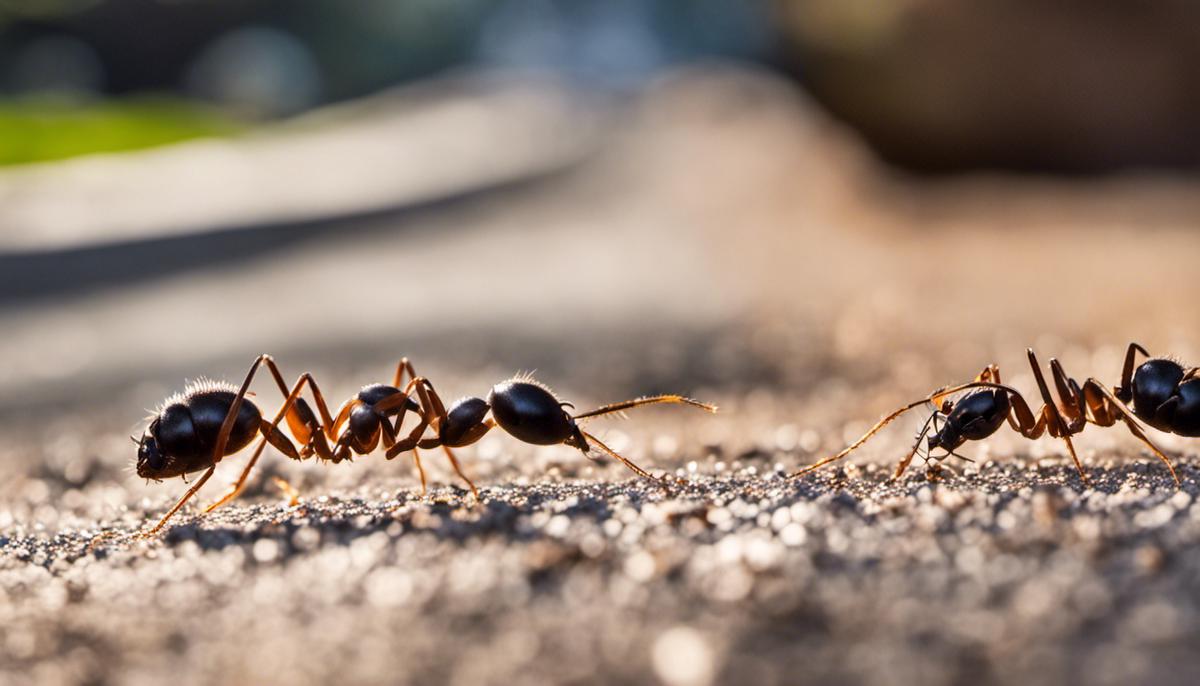
Identifying Pavement Ant Piles
Understanding the Pavement Ant
The first step in identifying pavement ants is to understand their appearance. These ants are small, usually about 1/8 to 1/16 inches long. They have a dark-brown to black body, with paler legs and antennae. Their body is segmented with a pair of tiny, pointed spikes on the thorax.
Recognizing Pavement Ant Habitats
Pavement ants are named for their common nesting locations. They typically construct their nests in cracks in the pavement, under rocks, near the foundation of buildings, in crevices of sidewalks, and under logs. If you walk around such spots with a watchful eye, you may find the entrance to their underground colonies.
Signs of a Pavement Ant Colony
Once familiar with their habitat, look for signs of a pavement ant colony. These ants excavate the ground beneath the pavement or concrete, pushing the dirt up through the cracks. This typically results in small mounds of soil or sand appearing on the surface, a telltale sign of the pavement ant’s presence. Pay attention to piles of displaced soil or tiny grains of sand especially along pavement cracks or sidewalks.
Behavior of Pavement Ants
Pavement ants are not nocturnal, so sightings are common in the daytime, especially during warm weather. Observe carefully to see if ants are ferrying food back and forth from the foraging area to the nest. They can often be seen doing a slow trail back to their nest, carrying crumbs or small insects.
Pavement Ants and Indoors
Though their primary habitat is outside, pavement ants can invade homes and businesses, especially for warmth and food during colder months. Inside buildings, they prefer nesting near heated areas and around pipes and under floors. If you see a trail of ants near walls or food sources inside your home, they could be pavement ants.
Following these steps will help in identifying if the ants in your vicinity are pavement ants. If you notice a possible infestation, it is advisable to contact a pest control professional for appropriate measures.
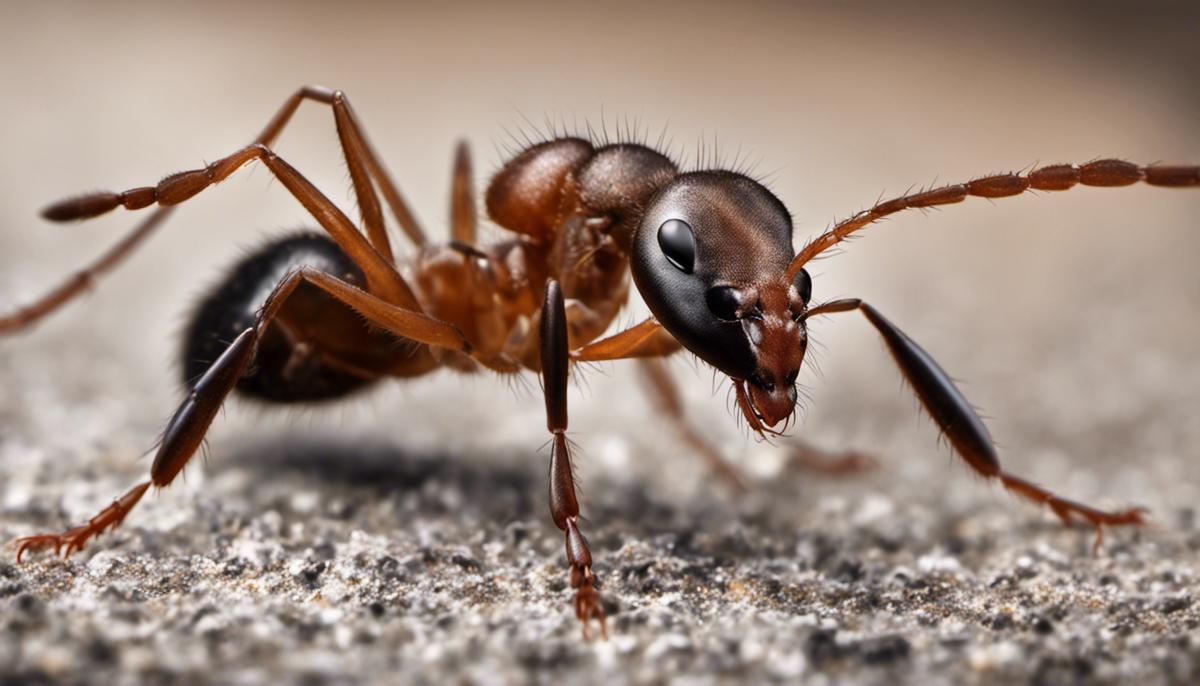
Understanding Ant Behavior
Characteristics and Appearance of Pavement Ants
Pavement ants, also known as Tetramorium Caespitum, are small ants that usually measure around 1/8th to 1/16th of an inch in length. They possess a dark, blackish-brown color and are distinguished by small grooves on their head and thorax. You can also identify them by their two nodes located between the abdomen and thorax. The segments at the abdomen’s end are all about the same size, unlike some other species of ants.
Behavioral Patterns of Pavement Ants
Pavement ants are social insects, forming colonies comprising several thousand members, inclusive of an egg-laying queen and a multitude of worker ants. The colonies typically inhabit cracks in pavements, hence their name, but you can also find them under logs, bricks, or within walls.
Foraging Activities of Pavement Ants
During warm months, these ants follow established trails when foraging for food. If you see small lines or trails of ants crawling in or around your home, it could indicate a pavement ant colony nearby. Pavement ants roam up to 30 feet from their nests when searching for food, indicating they are good scavengers.
Food Preferences of Pavement Ants
Pavement ants are omnivorous and opportunistic feeders. They are generally drawn to sweet sugary foods and greasy, fatty foods. In households, they’re often attracted to areas where food is stored or prepared, such as kitchens and dining areas.
Seasonal Activities of Pavement Ants
Pavement ants are most active during warmer months, especially in the spring and summer. During these periods, interaction and conflict between different colonies are common, resulting in battles that can last for several days. During cooler months, pavement ants usually stay within their colonies and are less active.
Other Identifying Features of Pavement Ants
In addition to these behaviors and preferences, pavement ants can also be identified by their small sandhill entrances found in pavements or along sidewalk edges. Furthermore, despite being primarily outdoor ants, pavement ants can invade indoor spaces in their pursuit of food or to escape poor weather conditions.
Pavement Ants Vs. Other Ant Species
Compared to other ants, pavement ants are less aggressive and less likely to pose significant damages to homes or buildings. However, they can become a nuisance due to their scavenging activities and the repetitive invasions caused by their constant search for food.
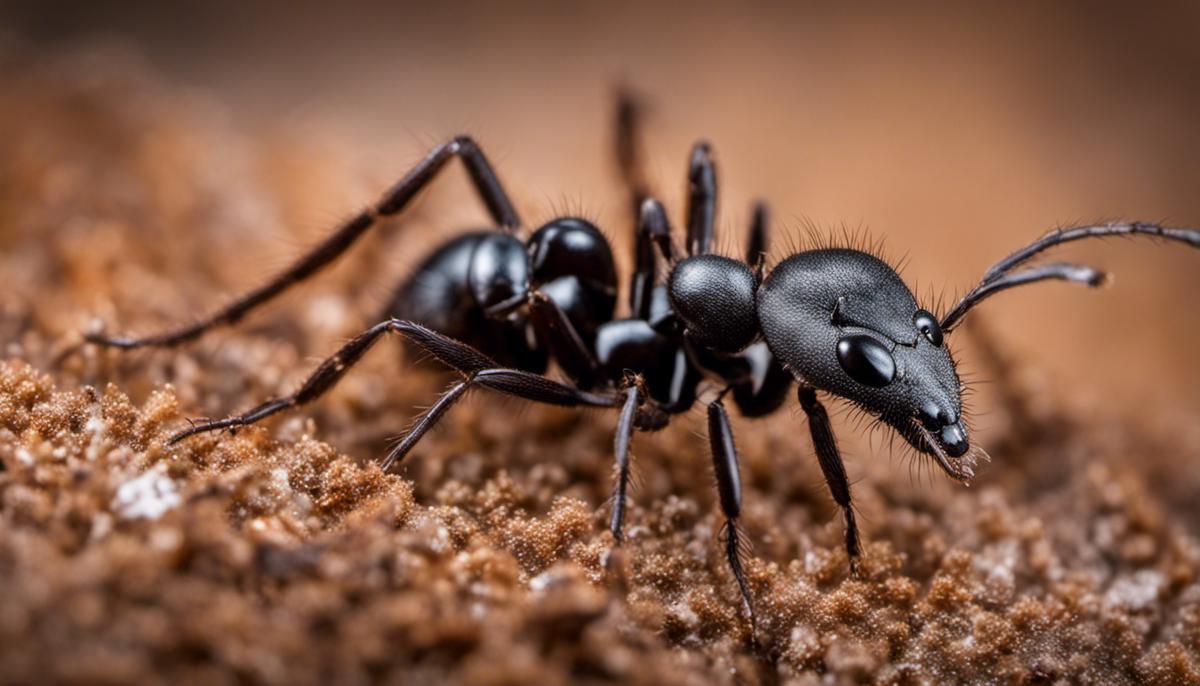
Taking the time to understand the daily routines of pavement ants, their food choices, their piles and periods of heightened activity gives us a unique insight into their species-specific behavior. They may seem simply like minor inconveniences of urban life; however, they are fundamental components of the ecosystem, playing a critical role in soil turnover and being a food source for other animals. Identifying and respecting them, along with other ant species, paves the way for the development of a more integrated and sustainable approach to living in harmony with the often-underestimated biodiversity sprawled right beneath our feet.






